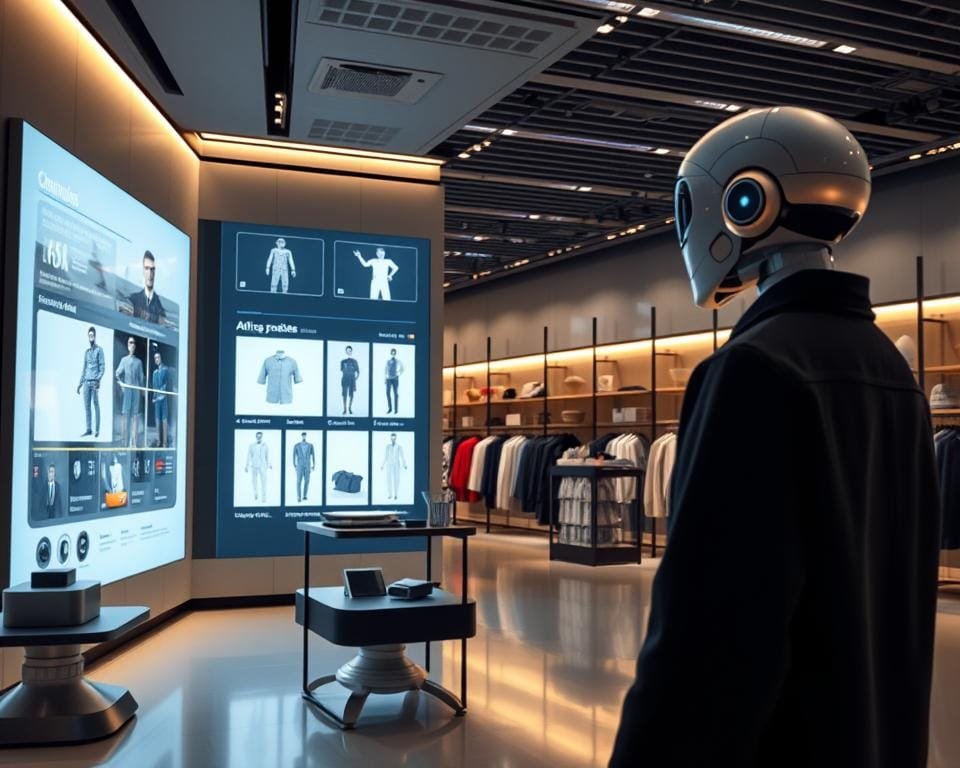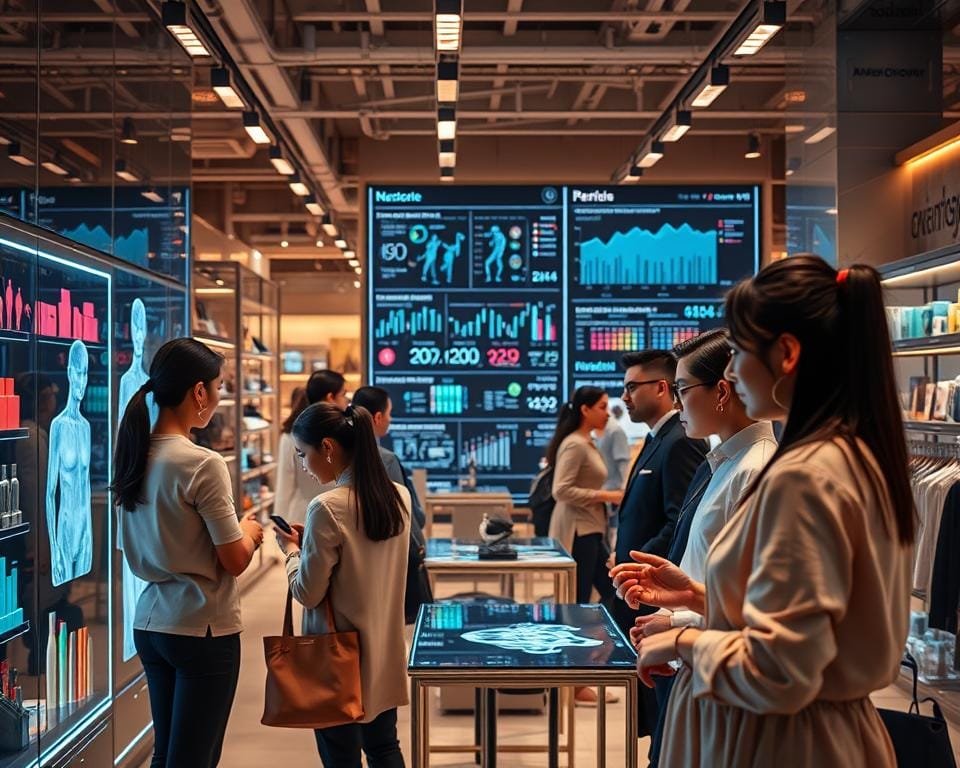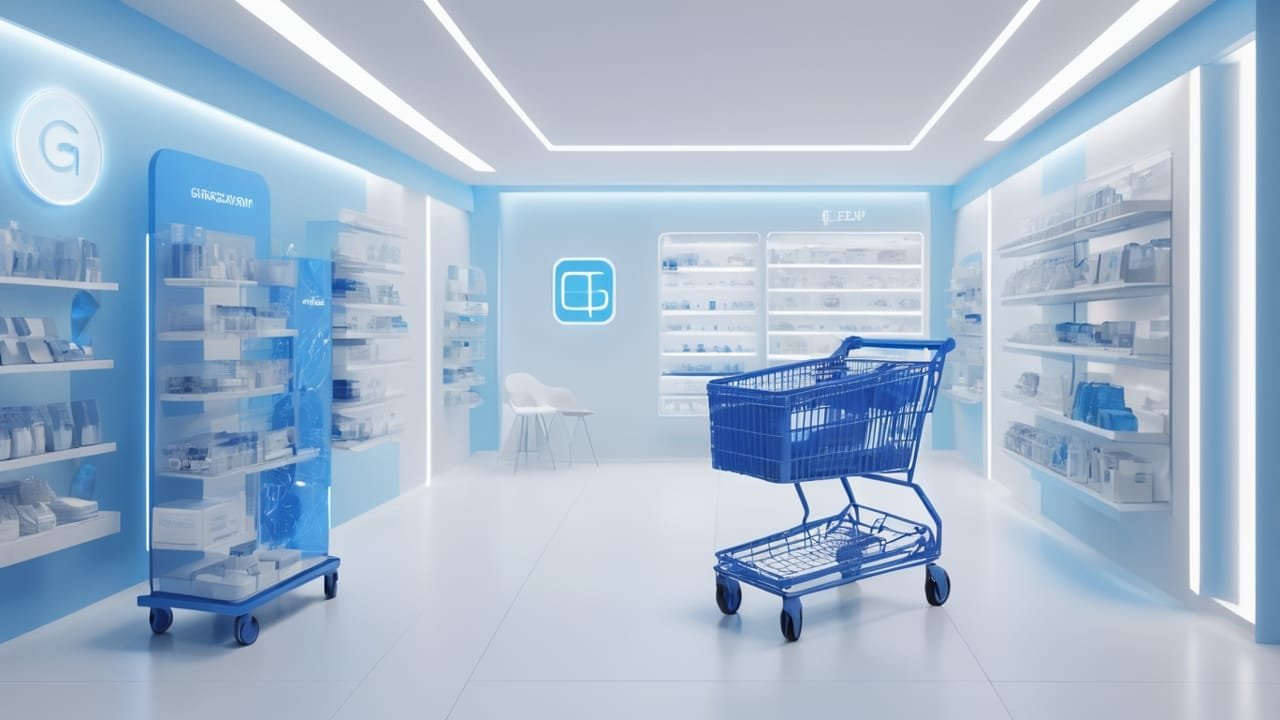Can retailers afford to ignore the transformative power of artificial intelligence in the shopping experience? As the retail landscape continues to evolve, the potential of Generative AI to unlock billions of dollars in economic value is becoming increasingly evident.
With the potential to add between $240 billion to $390 billion in economic value, equivalent to a margin increase of 1.2 to 1.9 percentage points across the industry, retailers are beginning to take notice. Most have started testing different use cases across the retail value chain, but few have managed to realize the technology’s full potential at scale.
The adoption of Generative AI is rapidly becoming a strategic necessity for retailers seeking a competitive edge in an increasingly digital marketplace. As we explore in this article, the impact of this technology is being felt across the retail value chain, from internal operations to customer-facing experiences.
The Economic Impact of Generative AI in Retail

As generative AI continues to evolve, its economic impact on the retail sector is becoming increasingly apparent. The technology is poised to revolutionize various aspects of the retail industry, from customer service to supply chain management.
Current Market Value and Growth Projections
The current market value of generative AI in retail is substantial and growing rapidly. Over the past year, most retailers have started testing different gen AI use cases across the retail value chain. According to recent surveys, 92% of retailers are investing more in AI, indicating a significant potential for growth in the industry. The market value is expected to increase as more retailers adopt generative AI technologies, driven by the potential to enhance customer experiences and improve operational efficiency.
The growth projections for the generative AI market in retail are promising, with a focus on improving personalized product recommendations and managing operational expenses more effectively.
Adoption Rates Among Major Retailers
Major retailers are rapidly embracing generative AI, with 92% increasing their investments in AI technologies across their operations. Large retailers like Walmart, Amazon, and Carrefour are leading the adoption, implementing generative AI across multiple business functions. Despite the enthusiasm, implementation at scale remains challenging, with only two out of over 50 retail executives reporting successful enterprise-wide implementation.
The adoption patterns show varying levels of commitment, with 59% of retailers already leveraging AI for personalized product recommendations, and 46% implementing generative AI to control costs.
Transforming Internal Retail Operations

Generative AI is enhancing operational efficiency in retail by automating and optimizing internal processes. This transformation is multifaceted, impacting various aspects of retail operations from decision-making to supply chain management and employee productivity.
Streamlining Decision-Making Processes
Generative AI tools are being utilized to streamline decision-making processes within retailers. These tools analyze vast amounts of data to provide actionable insights, enabling retailers to make informed decisions quickly. By automating data analysis, AI reduces the time spent on interpreting complex data sets, thus accelerating the decision-making process.
Enhancing Supply Chain Management
The integration of generative AI in supply chain management is revolutionizing how retailers manage their inventory and logistics. AI algorithms can predict demand, optimize stock levels, and identify potential disruptions in the supply chain. This proactive approach helps in minimizing losses and ensuring that products are available when needed, thus enhancing overall operational efficiency.
Boosting Employee Productivity
Generative AI is transforming retail workforce productivity through AI “copilots” that augment employee capabilities. For instance, “Copilots” can boost tech talent productivity by reducing the time spent on software engineering tasks by up to 60%. Retailers like Mercado Libre have deployed these copilots to improve satisfaction and productivity among their development teams. Similarly, Lindex introduced the “Lindex Copilot” to support store employees with personalized advice on operations and daily tasks, thereby enhancing their performance and confidence.
By leveraging generative AI, retailers can significantly improve their internal operations, leading to enhanced operational efficiency and competitiveness in the market.
Generative AI in Retail: Customer-Facing Applications
The integration of generative AI in retail is leading to innovative customer-facing applications that are transforming the shopping experience.

AI-Powered Chatbots and Virtual Shopping Assistants
AI-powered chatbots and virtual shopping assistants are revolutionizing customer service in retail. These tools enable customers to receive personalized support and guidance throughout their shopping journey. By leveraging natural language processing and machine learning, chatbots can understand and respond to customer inquiries, improving the overall shopping experience.
Hyper-Personalized Shopping Experiences
Generative AI enables retailers to offer hyper-personalized shopping experiences tailored to individual customer preferences. By analyzing customer data and behavior, AI algorithms can suggest relevant products, promotions, and content that resonate with customers. This level of personalization enhances customer engagement and loyalty.
Smart Search and Product Discovery
Smart search and product discovery systems powered by generative AI are transforming how customers find products. These advanced systems understand the intent and context behind customer queries, providing highly relevant product suggestions. Implementation data shows that smart search is a priority for retailers, with 42% identifying live search capabilities as their top AI personalization feature.
By bridging the gap between customer needs and product categorization, smart search technology improves the shopping experience and increases conversion rates. As retailers continue to adopt generative AI solutions, customer-facing applications will become increasingly sophisticated, driving further innovation in the retail industry.
Innovative Use Cases Reshaping the Shopping Experience
The retail landscape is undergoing a significant transformation thanks to generative AI, introducing innovative use cases that are reshaping the shopping experience. This transformation is evident in various aspects of retail, from how customers interact with products to how retailers market their offerings.
Virtual Try-Ons and Visual Search
AI virtual try-on technology is revolutionizing the way customers shop online by allowing them to see how products look on them without having to physically try them on. This technology uses artificial intelligence to superimpose products on customer-uploaded images or live videos, enhancing the online shopping experience.

AI-Generated Product Designs and Displays
Generative AI is also being used to create innovative product designs and displays. By analyzing customer data and preferences, AI can generate product designs that are likely to appeal to specific customer segments, enabling retailers to offer personalized products.
Moreover, AI-generated product displays can help retailers create visually appealing product showcases that can be easily customized for different marketing campaigns.
Automated Content Creation for Marketing
Automated content creation powered by generative AI is transforming retail marketing by producing high-quality, personalized content at scale across multiple channels and formats. This includes generating unique product descriptions, promotional content for social media, and email campaigns that are tailored to specific customer segments.
Retailers can use AI to create descriptions for their products, promotional content for social media, blog posts, and other content that improves SEO and drives customer engagement. AI can generate personalized marketing content for individual customers, such as emails or ads, based on customer data like past purchasing behavior and preferences.
Implementation Strategies for Retailers

To harness the full potential of generative AI, retailers need to develop effective implementation strategies. This involves understanding the various approaches to AI adoption and the organizational adjustments required to support these technologies.
Choosing Between “Taker,” “Shaper,” or “Maker” Approaches
Retailers must decide how they want to engage with generative AI, whether as a “Taker” by adopting existing solutions, a “Shaper” by modifying current technologies to better suit their needs, or a “Maker” by developing entirely new AI models. This decision significantly impacts their data strategy and the talent they need to acquire.
Each approach has its advantages and challenges. For instance, being a “Maker” allows for maximum customization but requires significant investment in models development and data infrastructure.
Building Cross-Functional Teams for AI Integration
Successful AI implementation requires collaboration across different departments within a retail organization. Building cross-functional teams that include both technical experts and business stakeholders is crucial. These teams can identify opportunities for AI to add value, develop data-driven solutions, and ensure that AI initiatives align with overall business objectives.
By fostering a culture of collaboration and innovation, retailers can more effectively integrate AI into their operations and improve their competitiveness.
Addressing Data Quality and Privacy Concerns
Retailers face significant challenges related to data quality and privacy when implementing generative AI. Ensuring that data is accurate, complete, and accessible is vital for training effective AI models. Moreover, retailers must comply with privacy regulations and maintain customer trust by being transparent about how they use customer data.
Implementing privacy-preserving techniques and establishing robust data governance frameworks are essential steps in addressing these concerns.
The Future of Retail in the Age of Generative AI
Generative AI is poised to redefine the retail experience, creating a new paradigm for customer engagement. The retail industry is on the verge of a significant transformation, driven by the ability of generative AI to create seamless, intelligent experiences that span the entire customer journey.
Currently, retailers engage with customers in only three of the seven typical journey stages. However, generative retail enables meaningful interactions across all phases—from initial awareness through post-purchase support and re-engagement. This shift is expected to enhance customer service, making it more proactive and personalized.
Industry forecasts reveal that 48% of retail leaders identify AI technologies as the most transformative force for the industry over the next 3-5 years, with 60% planning implementation within the next year. The priorities driving this adoption include enhancing customer experience (59%), improving operational efficiency (49%), and increasing ROI (44%).
As generative AI continues to evolve, we’re witnessing the emergence of truly generative retail—an ecosystem where AI continuously creates personalized experiences, predicts customer preferences, and generates new product and service offerings based on real-time insights. This will lead to improved customer satisfaction and more effective product recommendations.
The technology will increasingly blur the lines between physical and digital retail, with AI orchestrating unified experiences that leverage the strengths of both channels. Retailers that successfully implement generative AI will gain unprecedented abilities to understand and respond to customer preferences at an individual level, creating shopping experiences that feel intuitive and effortless.
As the technology matures, we’ll see generative AI move beyond supporting human decision-making to autonomously managing significant portions of retail operations. This will free human talent to focus on strategy and innovation, ultimately driving the retail industry forward in a competitive landscape.











